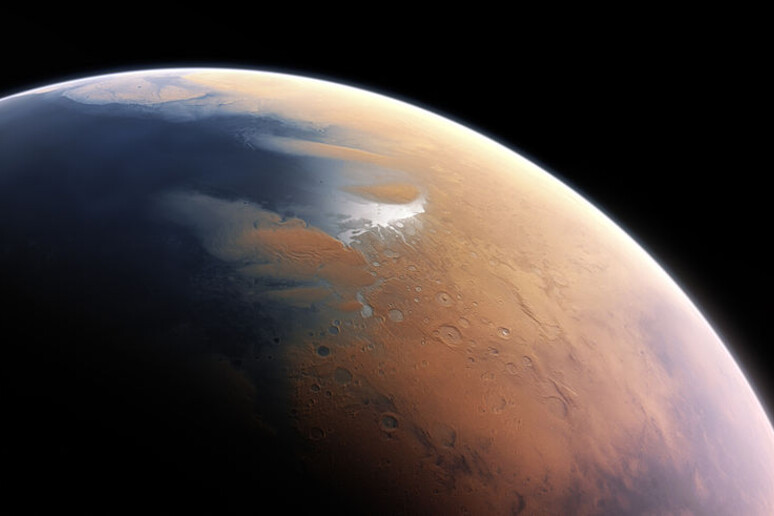A recent study led by the University of California at Berkeley and published in the journal of the U.S. National Academy of Sciences reveals traces of beaches that would date back some 3.6 billion years on the planet Mars. The discovery was made possible through the use of the Chinese Zhurong rover, whose data provided evidence of the traces hidden underground, about 10 meters deep in an area called Southern Utopia Planitia. The rover explored the Martian surface between 2021 and 2022. Researchers then examined images from the rover equipped with a radar capable of probing down to a depth of 80 meters.
“The structures identified do not resemble sand dunes or impact craters or lava flows–that’s why we thought of an ocean,” said geoscientist Michael Manga, who coordinated the research. “They are arranged parallel to what would have been the old shoreline: they have both the right orientation and the right slope to support the idea that there was an ocean for a long enough period of time to allow the beach to form.
Radar images analyzed show the presence of sediments reminiscent of those that accumulate along the Earth’s coastline due to the movement of sea waves. The size of the sand particles also match those we know on our planet. The study states, “Mars expresses Earth-like geological features, seasonal cycles and day-night rhythm that make it a unique analogue regarding the stages of Earth’s evolution.” On Earth, sand deposits like those found on the Red Planet take millions of years to form, which suggests to researchers that the ocean on Mars was quite long-lived, and that there were also rivers that transported sediment to the sea, just like on Earth.











